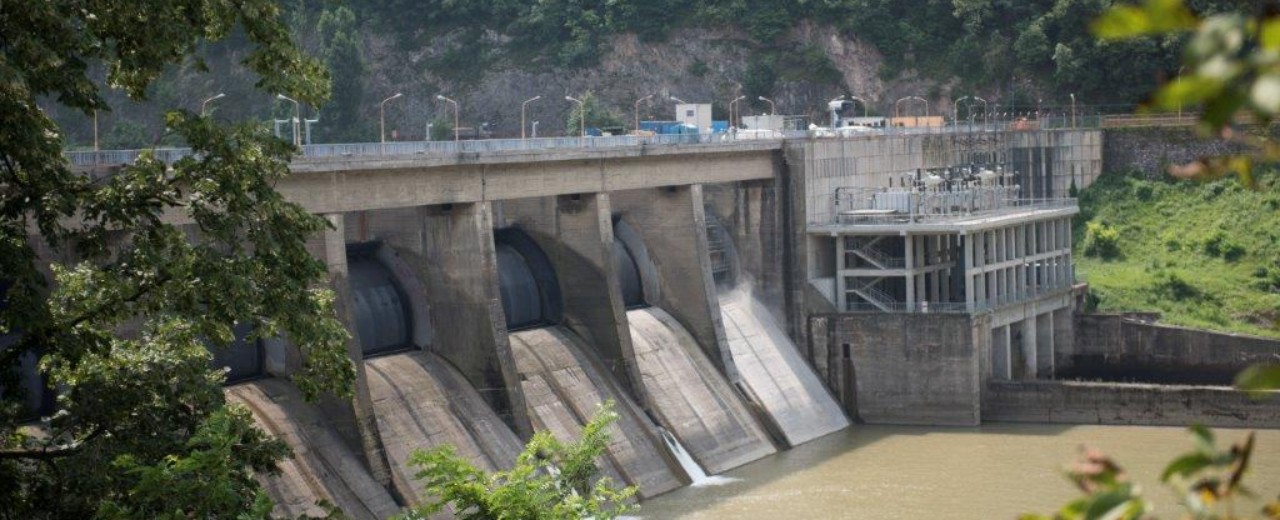
As of: 03/2024
In Serbia, the 1990s were characterised by the decline of the economy as a whole and of the energy sector in particular. To this day, the sector demonstrates a great need for technical rehabilitation, which is paired with significant inefficiencies and comparatively high pollutant emissions. The Serbian Government therefore strives to safeguard existing generation capacity and to modernise systems in line with environmental and efficiency issues. At the same time, it is planning to expand capacity and to place a particular focus on renewable sources of energy. This strategy has also received support from KfW Development Bank since 2000 with the aim of contributing to economic growth and to improving living conditions for the Serbian population as well as to environmental and climate protection.
Electricity (2018: 34,950 GWh) is generated almost entirely in large centralised power stations using lignite (65.7%) and hydropower (31.6%) (2.7% other). Among other things, this distribution of energy production indicates that Serbia will not be able to forego its use of domestic lignite as an energy source in the foreseeable future. However, according to statistics of state electricity provider Elektroprivreda Srbije (EPS), Serbia is currently only utilising around 55% of the total hydropower potential. So an important focus area of the German development programme “Promoting Efficiency and Environmental Measures in the Serbian Energy Sector” is to exploit the unutilised hydropower potential by rehabilitating existing hydropower plants (HPPs) and building new ones.
A chain of plants along the central stretch of the Drina River in western Serbia accounts for around half of the total generation capacity of all Serbian HPPs. The largest of all five power plants, Bajina Basta, was rehabilitated in 2013 using German promotional funding. These activities increased the capacity of the power plant by 15% to around 420 MW. Another Financial Cooperation (FC) project is rehabilitating the Zvornik HPP, which began in 2011.
Since the start of operation for the four turbines in steps from 1955 to 1958, the power plant near the town of Mali Zvornik has been in use almost continuously. As larger rehabilitation projects and replacement investments have failed to materialise since then, susceptibility to machinery failure and thus the likelihood of devastating damages has increased dramatically.

To prevent a further rise in maintenance costs or even the need to shut down the power plant, the FC module plans the exchange of obsolete electromechanical operating equipment with more effective units. Furthermore, deepening the riverbed downstream from the dam should enable even better utilisation of the site’s generation potential. The objective of the measures is to ensure full functionality of the plant for at least 25 more years and to increase the annual electricity generation from an average of 440 GWh to 550 GWh and the availability from 90% to 95% in the process.
The total costs of the project amount to around EUR 70 million. The funds are being provided as a reduced-interest loan from the German FC with a government guarantee from the Serbian Government. All project-relevant orders – including consulting services, supply of machinery and assembly services – were internationally tendered in accordance with the appropriate KfW guidelines.
The implementation consultant began work in 2011 so that by the end of 2015 all preparations for the actual rehabilitation were complete. Starting in 2016, one of the four machine units and its ancillary systems were rehabilitated each year. During this process, the remaining three units remained in constant operation to keep losses as low as possible during power generation.
Without the basic improvements described, there was a risk that the Zvornik HPP would have needed to be shut down in a few years. Against the backdrop of rising demand for energy and the full utilisation of the remaining power plants as a result, the only alternative to rehabilitation would have been to build a thermal power plant. When the two alternatives were compared in feasibility studies, the results showed that rehabilitation would prevent additional costs of around EUR 172 million over the following 30 years as well as emissions of around 605,000 tonnes of CO2. The project increases the reliability of the power supply in Serbia and boosts cost-effectiveness while also being environmentally friendly.
The rehabilitation and expansion of the Zvornik HPP’s generation capacity thus make a positive contribution to sustainable economic development in Serbia and to environmental and climate change mitigation.
The project contributes to the achievement of these following United Nations Sustainable Development Goals:
KfW Group
KfW Development Bank
Energy and Mobility, South Eastern Europe and Turkey Team
KfW Office Belgrade
Share page
To share the content of this page with your network, click on one of the icons below.
Note on data protection: When you share content, your personal data is transferred to the selected network.
Data protection
Alternatively, you can also copy the short link: https://www.kfw-entwicklungsbank.de/s/enzByzEL
Copy link Link copied